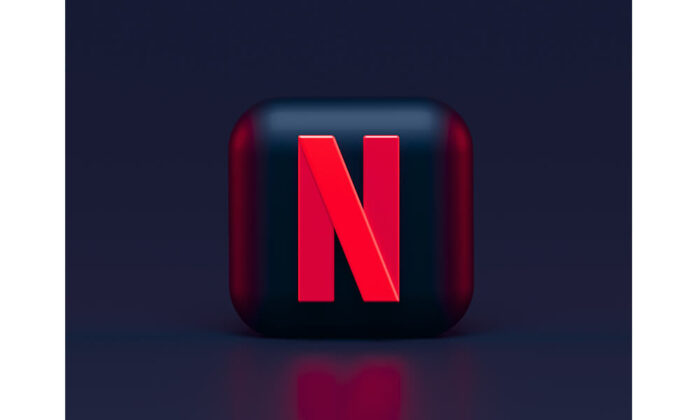Recently, the streaming behemoth, Netflix, rolled out a new feature for its platform to circumvent anxious scrolling. You know, how you despairingly scroll vertically and horizontally, across every genre, spending more time looking than watching.
What its viewers suffer from is analysis paralysis, a condition of being so overwhelmed by good options that you can’t even decide which to choose. Instead of computing the pros and cons of every option, simultaneously, your brain just admits defeat. It gives up.
Of course, analysis paralysis is not exclusive to Netflix. In fact, it is the modern condition.
Still, while most of us don’t make a fuss about which dishwasher to buy, most do, however, about ‘what should we watch?’ This simple question can induce a dread that is almost existential, because just a tap away are a slew of streaming services that offer hundreds and even thousands of shows and films, many of which are critically acclaimed. Some have won Emmys. While some films have even won the Oscar.
Welcome to the era of Peak TV. So, What should we watch?
A game of numbers
Let’s talk numbers.
When we say most of us make a fuss about ‘what should we watch?’, we literally mean most.
According to Our World in Data, nearly 50% of the world’s current population is aged between 25 and 65. And for most of them, Over-The-Top (OTT) streaming platforms such as Netflix, Disney+, and Amazon Prime are the primary sources of entertainment. The numbers, of course, further increased during a pandemic (40%), when cinemas and theaters were shut down.
Not that standard, broadcast TV has been wiped off the map. The 8% of the population aged above 65 still prefers good ol’ cable television. What’s striking about OTT platforms is that they have not grown.
The market was valued at around 6 billion USD in 2010. Today, the value is north of 80 billion USD. A growth of more than ten-fold (10x). In the next 5 years, however, its value is expected to cross 165 billion USD. Yes, a growth of thirty-fold (30x) in the last 15 years!
Then, there’s advertising.
Unlike linear TV, OTT platforms lack an industry-backed, unified metric to measure success. Traditionally, advertisers rely on such a metric for data that informs business-critical decision-making, like planning the budget. Instead, OTT platforms practice transparency, giving advertisers all the data, they need. The approach is new. One would think that without a common metric, advertisers and brands would be more wary of doing business.
Of course, that is not the case. Advertising and brand integrations have gone through the roof. In 2019, ad transactions increased by more than 300%, worldwide. The figure, today, is several billion dollars.
Who is driving that growth? Netflix, mostly.
And this should not come as a surprise since Netflix pioneered the revolution. Its head start, in fact, has gained it meteoric success and earned it a spot in the pantheon of global technological giants, the Big Tech, or FAANG — Facebook, Apple, Amazon, Netflix, and Google.
Though others are not that far behind.
As Netflix plans to spend more than 15 billion USD annually on content, Amazon acquired Metro-Goldwyn-Mayer (MGM) Studios for 8.5 billion USD, giving it the rights to astronomical hits like Rocky and James Bond. And how can we forget Disney, the content conglomerate, who is planning to spend almost 9 billion USD on Disney+, while more than 15 billion USD on its other platforms Hulu, Star, and ESPN Plus. Recently, AT&T announced an expensive merger with Discovery to expand the scope of its content. Peacock!, though, is fairly behind.
That said, despite OTT being the successor to the TV and gaining stellar success, it cannot seem to escape broadcast TV’s troubles.
Unlike linear TV, which creates content that is flat and passive, OTT platforms create content that empowers their audiences. It is personalized, tailored for their tastes, and encourages active viewing. And yet it faces the same challenge: Consolidation.
OTT consolidation is inevitable
Netflix planned to call its new feature “Shuffle Play”, but ultimately settled with “Play Something.”
When you think about it, the experience of “Play Something” is identical to the experience of watching cable television — you switch it on, and the content is already playing. In fact, that precisely was Netflix’s objective, to emulate the linear experience. Of course, what is different is that, unlike linear TV, “Play Something” plays something that is tailored to your taste, predicted by crunching massive amounts of viewership data. You are hooked, from the get-go.
The feature might seem insignificant, but its implications are massive. Netflix doesn’t want to end scrolling, but essentially the competition, which is ever-increasing and ever intense. Very much like linear TV, opportunity costs are bare, which means viewers won’t hesitate to switch platforms.
And very much like linear TV, when the competition gets so intense and cut-throat, it isn’t hard to predict what follows: big fishes gobble up the small ones.
The key difference is that the motivation for expensive mergers in the linear Media and Entertainment industry was acquiring content and subscribers. Today, the motivation is acquiring content, subscribers, and data.
Acquisitions don’t just merge subscribers but also databases. Since it is data that powers recommendations, the more of it, the better. Already, platforms that have had the most success or capital have access to cutting-edge machine learning technologies or AI. By coupling them with increasingly more data, the platforms further extend their advantage by making recommendations increasingly better, to the extent that soon content is expected to be personalized for users, not audiences.
Niche platforms like Mubi and Discovery might offer more inventive content, but they lack the subscriber base, technology, and capital to market and personalize their content as effectively as premium platforms like Netflix. In the short run, there are ways to avoid being gobbled up, but most involve a financial pinch, like spending more on advertising or offering free memberships. In the long run, not everyone can afford the losses. Consolidation is inevitable.
As Discovery CEO, David Zaslav remarked: “Within the next two years, it’s going to be put up or shut up for all of us.”
Who will win the streaming wars?
As to how many platforms will survive, Zaslav added that surely there’s not going to be seven. “Will there be three? Will there be four?”
It could be three. And the obvious guesses are Netflix, Disney, and Amazon Prime.
Why obvious?
Well, because they have the most subscribers.
Netflix alone has more than 200 million subscribers worldwide, while Disney and Amazon Prime have more than 100 million each. HBO Max and Discovery don’t have more than 70 million, combined.
While it is hard to estimate how many Prime subscribers use Prime Video, Netflix and Disney have a ridiculous advantage in leveraging data and creating the best content. Despite being “digital”, they are renowned Hollywood powerhouses, producing shows and films, like Game of Thrones, that sweep the highest honors but also producing the occasional hit-maker, like The Queen’s Gambit. Oh, and we haven’t even mentioned the Marvel Cinematic Universe (MCU) which has earned Disney more than 17 billion USD in revenue — and will generate more with its endless spin-offs.
But becoming the greatest and largest is part-data and part-money. The quickest and easiest way to the top is simply acquiring the best. Apple and Amazon could buy the hottest new platform in town, offer free memberships, spend a fortune on advertising, and still have money left to produce big-budget content. Amazon indeed acquired MGM, anything but a hot new platform in town. Would Apple follow?
Many experts believe that platforms that garner more than 50 million subscribers are safe. Others believe that subscriber count is a superficial measure of success. Instead, hours watched is more critical. Then, there is the question of – whom will the consolidation benefit? Is all-in-one great for consumers because it is much more convenient? Or is it worse because it will give rise to a content oligopoly that discourages experiment and change?
Whatever the outcome, data will certainly be at the center of this drama. This is a must-watch!

